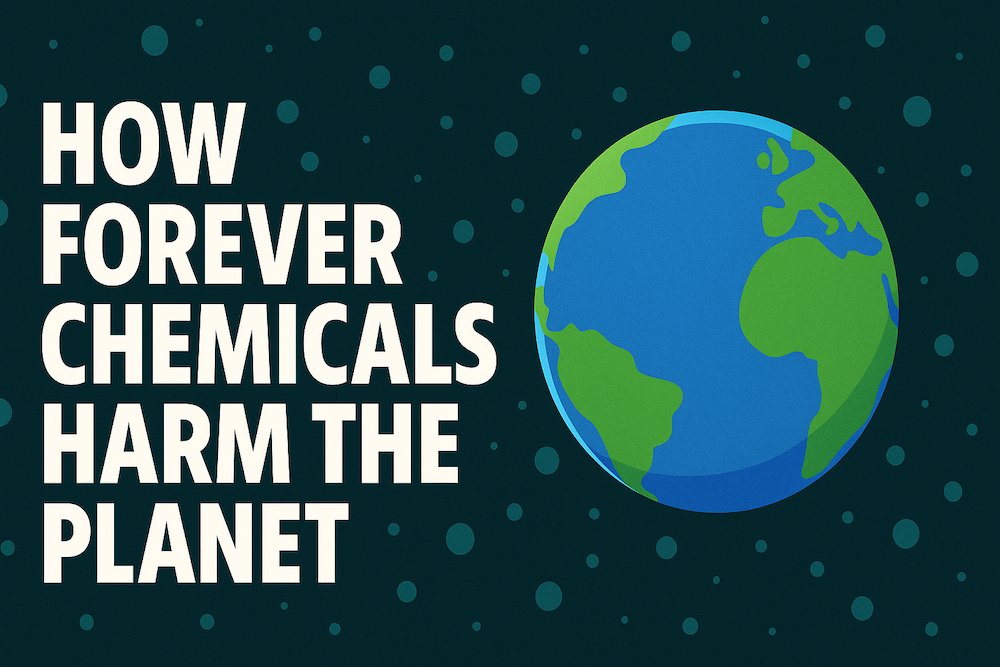Imagine drinking a glass of water, brushing your teeth, or frying an egg—without knowing you’re slowly being poisoned. This isn’t science fiction. It’s the reality many are facing due to a class of chemicals known as PFAS—per- and polyfluoroalkyl substances—also called forever chemicals.
What Are PFAS?
PFAS are synthetic compounds used for decades in products like non-stick cookware (Teflon), waterproof clothing, food packaging, and firefighting foam. Their defining trait? They don’t break down. Ever. That’s why they’re known as forever chemicals. Once released into the environment, they persist—contaminating water, soil, wildlife, and our bodies.
A Chemical Cover-Up
The scale of the PFAS crisis only came to light after internal documents from chemical giants like DuPont were exposed. One of the most shocking cases involves a corporate insider—Rob Bilott, a corporate defense lawyer who switched sides after uncovering documents revealing decades of corporate knowledge about PFAS toxicity. His story inspired the 2019 film Dark Waters.
DuPont’s own research, dating back to the 1960s, showed birth defects in rats and workers exposed to PFAS. But instead of going public, they buried the data—and continued production.
Global Contamination
Today, PFAS are found in:
- The blood of 97% of Americans.
- Drinking water supplies around the world.
- Rainfall—even in remote regions like the Arctic.
In short, no one is safe.
Interactive maps created by scientific institutions and watchdog groups reveal that thousands of sites globally are contaminated with PFAS. Some are near manufacturing plants, airports, or military bases where firefighting foams were used extensively.
The Health Risks
According to studies from Harvard, the CDC, and the Environmental Working Group, PFAS exposure is linked to:
- Cancer
- Thyroid disease
- Liver damage
- Fertility issues
- Immune system suppression
- Developmental delays in children
The longer these chemicals remain in your system, the more damage they may cause. And remember—they accumulate.
How Do PFAS Enter Your Body?
PFAS can enter the body through:
- Contaminated drinking water
- Inhalation of indoor dust
- Food packaging
- Cookware and utensils
- Personal care products
Once inside, they bind to proteins in your blood and stay for years. Blood tests in recent years have revealed alarmingly high levels of PFAS in both urban and rural populations.
Can We Remove PFAS?
Removing PFAS from water is possible, but difficult and expensive. Some methods include:
- Reverse osmosis filters
- Granular activated carbon
- Ion exchange resins
However, these solutions are not accessible to most people, especially in underfunded or rural communities.
Who Is Fighting Back?
Scientists, whistleblowers, and independent testing labs are now leading the charge. Organizations like EWG, PFAS Exchange, and Puraffinity offer tools to measure your exposure and reduce risk.
Government responses vary. While the EU has proposed PFAS bans, the U.S. EPA is only now beginning to regulate some PFAS compounds. In the meantime, some affected communities are suing major corporations for cleanup and health damages.
Why This Story Matters
This is not just an environmental story. It’s about corporate greed, human health, and global accountability. If left unchecked, PFAS could become one of the most widespread and long-lasting health crises in history.
Everyone should care—because everyone is already exposed.
Here’s another story that will blow your mind… The Truth About Asbestos: Why This Killer Material Is Still Legal in 2025
Watch the full video that inspired this article on our YouTube channel Curiosity AI.
